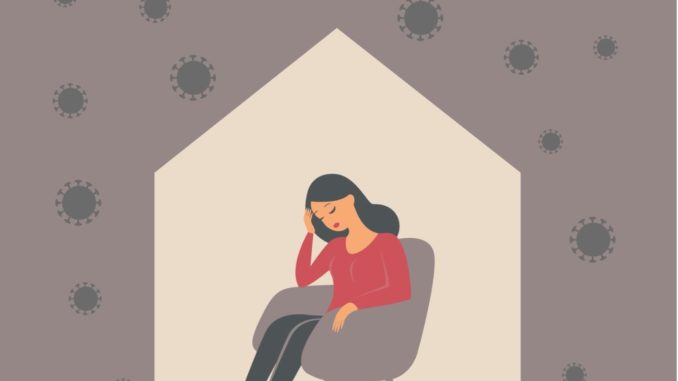
Why suicide prevention must be prioritised whilst a clearer picture behind rates is analysed
CREDIT: This is an edited version of an article that originally appeared on The BMJ
As restrictions on our lives continue, in order to curb the spread of COVID-19, there are concerns that rates of suicide may increase—or have already increased. Several factors underpin these concerns, including a deterioration in population mental health, a higher prevalence of reported thoughts and behaviours of self-harm among people with COVID-19, problems accessing mental health services and evidence suggesting that previous epidemics such as SARS (2003) were associated with a rise in deaths by suicide.
Widely-reported studies modelling the effect of the COVID-19 pandemic on suicide rates predicted increases ranging from one per cent to 145%, largely reflecting variation in underlying assumptions. Particular emphasis has been given to the effect of the pandemic on children and young people; numerous surveys have highlighted that their mental health has been disproportionately affected, relative to older adults, and some suggest an increase in suicidal thoughts and self-harm.
Supposition, however, is no replacement for evidence. Timely data on rates of suicide are vital and, for some months, we have been tracking and reviewing relevant studies for a living systematic review. The first version in June found no robust epidemiological studies with suicide as an outcome, but several studies reporting suicide trends have emerged more recently.
Overall, the literature on the effect of COVID-19 on suicide should be interpreted with caution. Most of the available publications are preprints, letters (neither is peer reviewed) or commentaries using news reports of deaths by suicide as the data source.
Nevertheless, a reasonably consistent picture is beginning to emerge from high income countries. Reports suggest either no rise in suicide rates (Massachusetts, USA; Victoria, Australia; England) or a fall (Japan, Norway) in the early months of the pandemic. The picture is much less clear in low-income countries, where the safety nets available in better-resourced settings may be lacking. News reports of police data from Nepal, for example, suggest a rise in suicides, whereas an analysis of data from Peru suggests the opposite.
Any change in the risk of suicide associated with COVID-19 is likely to be dynamic. The 20% decrease reported in Japan early in the pandemic seemed to reverse in August, when a 7.7% rise was reported. Evidence from previous epidemics suggests a short term decrease in suicide can occur initially – possibly linked to a ‘honeymoon period’ or ‘pulling together’ phenomenon. Trends in certain groups may be hidden when looking at overall rates, and the National Child Mortality Database has identified a concerning signal that deaths by suicide among under 18s may have increased during the first phase of lockdown in the UK.
Preventive action
We must remain alert to emerging risk factors for suicide and also recognise how known risk factors may be exacerbated—and existing trends and inequalities entrenched—by the pandemic. In 2019 suicide rates among men in England and Wales were the highest since 2000 and, although suicide in young people is relatively rare, rates have been rising in 10-24 year olds since 2010.
Tackling known risk factors that are likely to be exacerbated by the pandemic is crucial; these include depression, post-traumatic stress disorder, hopelessness, feelings of entrapment and burdensomeness, substance misuse, loneliness, domestic violence, child neglect or abuse, unemployment and other financial insecurity. Appropriate services must be made available for people in crisis and those with new or existing mental health problems.
Of greatest concern is the effect of economic damage from the pandemic. One study reported that, after the 2008 economic crisis, rates of suicide increased in two thirds of the 54 countries studied, particularly among men and in countries with higher job losses.
Appropriate safety nets must be put in place, or strengthened, for people facing financial hardship, along with active labour market policies to help people who are unemployed obtain work. Responsible media reporting also has a role; promoting the importance of mental health support, signposting sources of help, reporting stories of hope and recovery and avoiding alarmist and speculative headlines that may heighten risk of suicide.
It is still too early to say what the ultimate effect of the pandemic will be on suicide rates. Data so far provide some reassurance, but the overall picture is complex. The pandemic has had variable effects globally, within countries and across communities, so a universal effect on suicide rates is unlikely. The impact on suicide will vary over time, and differ according to national gross domestic product, and individual characteristics such as socioeconomic position, ethnicity and mental health.
One guiding principle, however, is that suicide is preventable, and action should be taken now to protect people’s mental health. We must remain vigilant and responsive, sharing evidence early and internationally (such as in the International COVID-19 Suicide Prevention Research Collaboration) in these evolving uncertain times.



Be the first to comment